Sharing data and knowledge in finished vehicle logistics, and across the wider automotive logistics sector, will be beneficial for OEMs and tier suppliers alike – but despite this, there is still a reluctance to break the industry norms and trust other parties with data and information. At this year’s Finished Vehicle Logistics North America conference, leaders from Ford, Subaru, VW and more spoke about why it’s necessary to break the status quo and democratise data to see effective results.
While sharing information and data has been acknowledged by the wider automotive supply chain as beneficial, with OEMs coming together to form joint venture platforms like Cofinity-X to enable the secure exchange of data, opinions tend to split when it comes to data sharing in finished vehicle logistics. In the fast-moving FVL sector, with such competitiveness for capacity and a stronger potential downside to sharing data around things like delayed deliveries, it can be difficult to enable transparency, even if all parties want to.
“I don’t think OEMs are trying to hog the data or hide it, I think it’s more a matter of being able to democratise that data efficiently,” Paul Roosen, vehicle logistics planning manager for North American vehicle logistics at Ford told delegates at the recent conference.
Lisa Kline, vice-president of Vehicle Planning and Logistics at Subaru of America agreed, adding that the OEM is sharing more information with logistics partners and ports. “I think our mantra is that we can’t stop evaluating any option available to us,” she said.
Working on the basics of communicating
To enable comfortability with more commercially sensitive information and data sharing, OEMs and logistics firms alike need to work on the basics of communicating knowledge about operations and what’s coming down the pipeline. Subaru’s Kline, who previously told Automotive Logistics that long-standing partnerships are the key to Subaru’s success, believes that building, maintaining and nourishing these relationships through information sharing will help finished vehicle logistics evolve as a sector.
“We’ve talked before about how important our partnerships are to our operation, and when they are understanding what our mission is, what the job at hand is, communication is key to that,” she told delegates.

She said that it’s important for the sector to look at relationships long-term, rather than to “hit the reset button every single month as we have been since prior to 2019”. As an example, she said Subaru of America is relying on a large amount of product coming into the port of Vancouver to get towards central US, but rail car supply is a challenge. Finding a solution to such a challenge could involve sharing problems with partners – including old partners that may not be as actively involved in the day-to-day logistics.
“We need to look at where we can also introduce a different port of entry for a certain region of our operations, and that wasn’t about requiring bringing on new partnerships, that was actually going to the table with our existing partnerships and asking where we can reenact a partnership that isn’t as strong or as relevant today but that we can lean on in order to take us to the future.”
“I would encourage everybody to share where your inventory is and when it’s forecasted to arrive over that ramp,” - Paul Roosen, Ford
Of course, working with partners could also be used to create a ‘Plan B’ in advance of, or anticipation of, a problem such as capacity shortages. But Christoph Seitz, global vice-president, Finished Vehicles, DP World says that while it’s possible, it’s likely not happening yet. “I firmly believe the transparency is not necessarily there from the industry, in terms of providing long-term visibility or looking three months ahead, especially with this extremely volatile moment,” Seitz said. “It is very difficult to get a longer-term outlook that that allows us to plan proactively for certain solutions. But I would urge the industry, especially OEMs, to provide as much transparency as possible.”
Sean Baltazar, senior vice-president, Sales, RPM said the industry suffers from what he calls ‘planned failure’, where procurement processes end up building a scenario that works well on paper but runs up against problems when placed in the context of day-to-day realities in FVL.
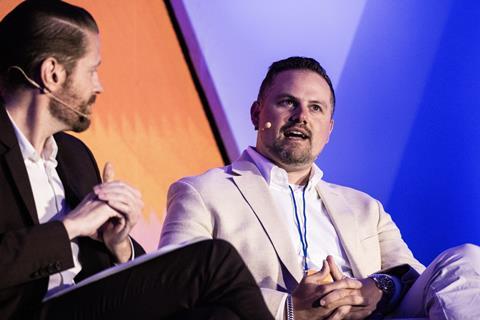
To get past these planned failures, it’s important to communicate with external partners and internal teams. Roosen said that this open and honest communication has helped Ford during recent headwinds, such as the Francis Scott Key bridge collapse in Baltimore earlier this year, rail car shortages and labour disruptions. “What we did to try to mitigate some of those headwinds was to lean into key rail partnerships and how we could work together to design our network better,” he said. This allowed more empties to be generated to give the OEM more lift out of Mexico.
“One thing that my logistics team has been very conscientious of is making sure that each of our business partners knows exactly where Subaru of America is headed strategically,” said Kline. To improve this, Subaru recently held its inaugural Logistics Partner Summit. She said her logistics team thought a summit would be a good opportunity to bring logistics partners into the fold and share information and expectations. “The feedback that came back was: ‘We know exactly where Subaru stands right now’. Our partners want to do business with us and carry us hand-in-hand towards that EV future, and that gives us confidence that we have the right partners aligned.”
Using tools to enhance real-time sharing
Once the underlying trust has been established, it could be helpful to then introduce tools to share data in real-time, such as a supplier portal, according to the panel of experts.
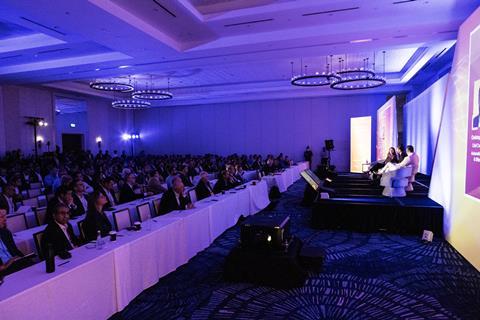
Ford’s Roosen said that his team is currently working on building a supplier portal to provide transparency to all the OEM’s transport partners across rail, car haul and yard managers. “We’re going to give them an inventory view that says where our inventory is, if it’s at destination ramps, on rail cars headed to the destination, or still at my plant, or serialised and scheduled for production, so there are no surprises of getting a spike at a ramp of 130% or 150%,” he said. “That will allow our partners to better plan their resources, so they can have trucks waiting and available when needed.”
Ford also worked with its partner Freight Verify to use a portal within their application that streamlines dealer pickups, helping to scale up. A dealer can go into the portal and see if a vehicle is built into a trucking load and if it’s going to arrive quickly. If not, they can come to where the vehicle is and pick it up themselves.
Roosen added: “I would encourage everybody, if you’re not already sharing those data points, to share where your inventory is and when it’s forecasted to arrive over that ramp. The capability is out there, it’s just about how you democratise it in an efficient way.”
Legal barriers to sharing information
While intentions may be to share information, data and knowledge across internal teams and external logistics partners, the reality of legal barriers and commercial sensitivities may get in the way.
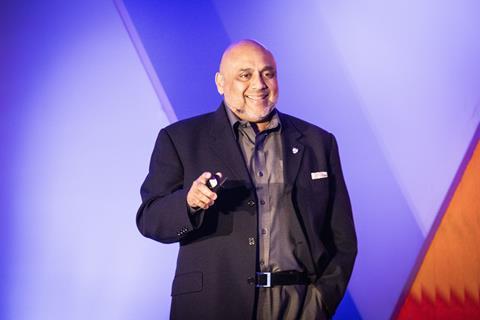
Anu Goel, executive vice-president, Group After Sales & Service, Volkswagen Group of America told delegates that this is sometimes the case for VW, even internally. The intention to share information is there, and in the last year, VW Group has put an emphasis on transparency and a “single source of truth”. The logistics group looked at the OEM’s North American regional network and its divided teams across FVL, Canada, Mexico and the US, and found that the rail and vessel movements in the region are all interconnected, despite the dividing border lines. “We need to think and act as one region, one team,” Goel said.
As a result, his team put together a ‘Virtual Task Force’ and met every day to coordinate moving vehicles in order to make better regional decisions. Now, the group has a formal organisational structure for the combined US, Canada and Mexico networks that reports into Goel, with a control tower that manages capacity with visibility between 1-5 years out. But still, Goel said there are problems with sharing data.
“You need three things to make this control tower system work,” he said. “You need the transparency of data, you’ve got to get people to give it to you. There was politics involved with that and some individuals did not want to let up and make the data transparent because it may not put them in the best light.
“Then you ask for systems access and then get all the reasons why a US person can’t have access to Mexican systems, there are legal things that you have to fight through. And then you realise we all use different systems.”
”We realised that every day you can take out of that [delivery] timeline frees up roughly $10-14m in working capital,” - Anu Goel, VW Group of America
However, this isn’t stopping Goel or his team. “I have no illusion that we will be on the same systems, I think we’re going to have to do an overlay to pull data and put it into one data cloud or data lake,” he speculated.
To Goel and the wider VW team, the benefits of trying to solve these problems outweigh the frustrations of meeting these barriers. They brought in a consultant to help communications between teams and enable the benchmarking of some data, including calculations of how long it takes on average for a car to be cleared at checkpoint eight, the end of the assembly line, to dealer delivery. They found that in Mexico, this takes around 30 days from end of the line in the Puebla facility to delivery to dealer.

They also figured out that every day that can be taken out of this timeline – through communicating with logistics partners efficiently to manage capacity - ”frees up roughly $10-14m in working capital”.
“This is what we do,” he said. “Disruption is our way of life, and we get paid to solve the problem.”
Do future solutions lie in AI?
While it may be tempting to look to artificial intelligence as an easy solution that will come down the line and fix these communication and capacity problems, the panel onstage were skeptical.
RPM’s Baltazar said AI has appeared in marketing pitches everywhere as a future solution, but he hasn’t seen enough of what the technology can actually do in FVL terms.
“I view our industry as an optimisation challenge every single day and when you’re talking about finite amounts of capacity, how do you intelligently match what’s available to be shipped with what’s truly available to ship it?” he said.
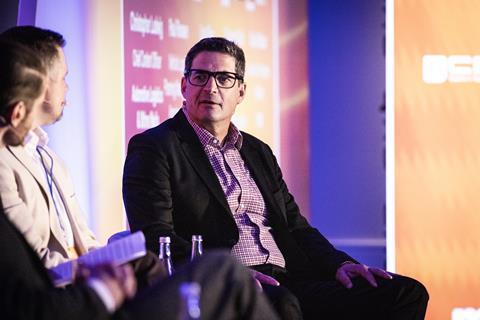
“Now we have this ‘reshuffling the deck’ that you have to do as new inventory comes in and inventory is moving out and things go on hold,” he added. “That game of interchangeability is incredibly important and much more dynamic than it’s ever been, so how do you have technology do that every single day on a continuous basis?”
Seitz agreed: “I think the industry is still in the process of discovering what’s possible and how to put the pieces together, but I think it’s just a matter of time and the curve will go up quite steeply where suddenly end-to-end visibility will become much better quality.”
Instead of waiting for an omniscient solution to be dropped in the industry’s lap, there is a real need to work together as a sector now. Subaru’s Kline said that “it all comes down to the people”.
She said that, as well as communicating their issues, OEMs need to make sure that logistics partners and ports are healthy and protected, partly by ensuring they know what’s coming down the pipeline. “Nothing gets done unless you have the right people in the right positions to carry forward the best efficiencies and the best productivity,” she said.
Finished Vehicle Logistics North America 2024 took place 21-23 May in Waterfront Beach Restort, Huntington Beach, California.
At the event, experts addressed the key issues and opportunities in the FVL sector including combating the capacity crunch across rail, road and sea, harnessing data and analytics to make real-time improvements to network planning and operations, turning EV planning into reality, balancing investment and partnerships for decarbonisation strategies and re-imagining partnerships across the vehicle logistics supply chain.
Topics
- AI & Predictive Analytics
- Analysis
- Canada
- Digitalisation
- DP World
- Editor's pick
- Emergency logistics
- features
- Features
- Finished Vehicle Logistics
- Finished Vehicle Logistics
- Ford
- FVLNA 24
- Inventory management
- Logistics service provider
- Mexico
- North America
- OEMs
- People
- Ports and processors
- Purchasing
- Rail
- Road
- RPM
- Shipping
- Subaru
- Suppliers
- Supply Chain Planning
- Sustainability
- Technology service providers
- Top stories
- Track-and-trace
- Trade & Customs
- United States Of America
- Volkswagen

























![Global[1]](https://d3n5uof8vony13.cloudfront.net/Pictures/web/a/d/s/global1_726550.svgz)





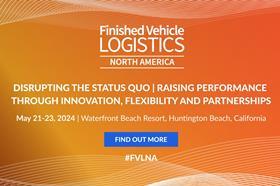




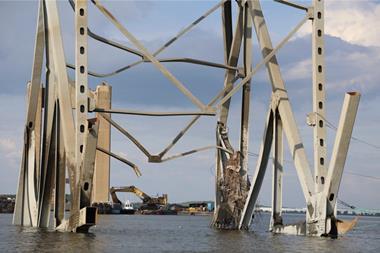
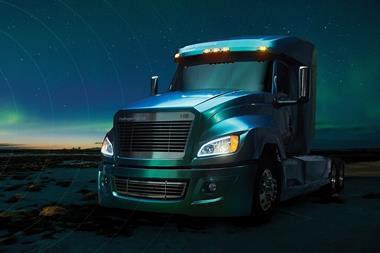



No comments yet